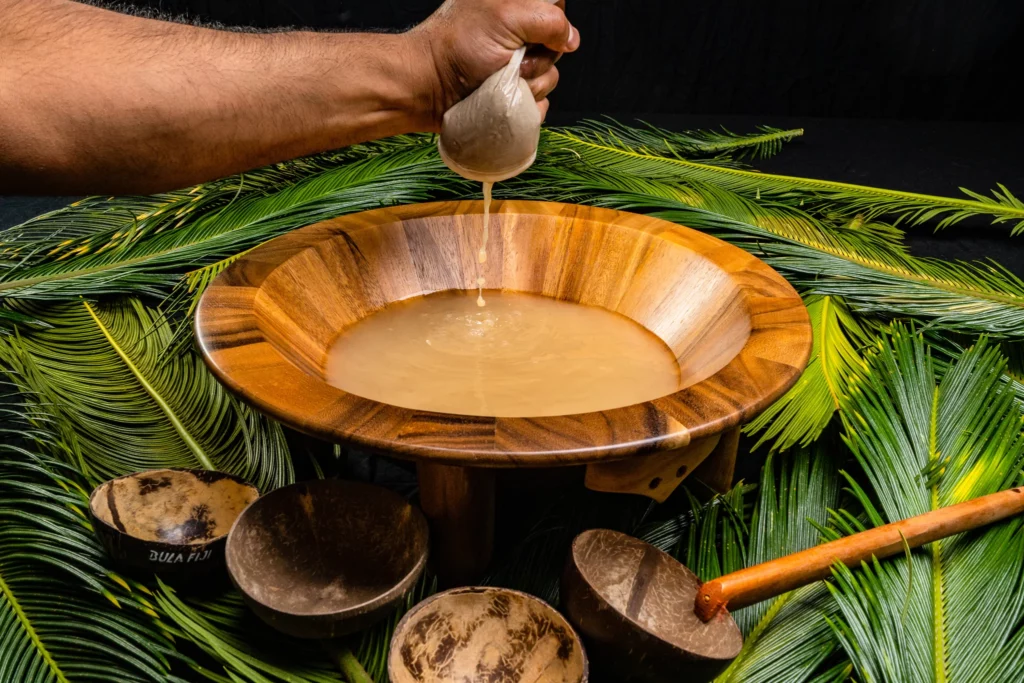March 7, 2024

In recent years, both kava and kratom have gained popularity as natural remedies for various ailments, including pain relief, anxiety reduction, and relaxation. While these botanicals share some similarities, they are distinct in their origins, effects, and applications. Let’s explore the differences between kava and kratom to help you make an informed decision about which one may be right for you!
Origins and Botanical Background
Kava, also known as Piper methysticum, is a plant native to the South Pacific islands. Traditionally consumed as a ceremonial drink in Polynesian cultures, kava is prepared by grinding the root into a powder and then mixing it with water to create a beverage known for its calming and euphoric effects.
On the other hand, kratom, or Mitragyna speciosa, is a tropical tree native to Southeast Asia, particularly Thailand, Indonesia, Malaysia, and Papua New Guinea. Kratom leaves contain alkaloids such as mitragynine and 7-hydroxymitragynine, which interact with opioid receptors in the brain to produce various effects, including pain relief, mood enhancement, and relaxation.
Effects and Applications
Kava is primarily known for its anxiolytic (anxiety-reducing) and sedative properties. When consumed in moderate doses, kava can promote relaxation, relieve stress, and induce a sense of calmness without causing significant sedation or impairment. Kava is often used as a social lubricant in gatherings and ceremonies and is considered a safer alternative to alcohol for relaxation.
In contrast, kratom exhibits a wider range of effects, depending on the strain and dosage. While some kratom strains, such as Red Bali and Maeng Da, are prized for their analgesic properties and pain-relieving effects, others, like White Maeng Da, offer more stimulating and energizing effects. Kratom is commonly used to manage chronic pain, boost mood and energy, alleviate anxiety, and improve focus and concentration.
Key Differences and Considerations
One of the most significant differences between kava and kratom is their mechanism of action and potential side effects. While both botanicals interact with the brain’s receptors to produce their effects, kratom’s alkaloids have a stronger affinity for opioid receptors, which can lead to potential dependence and withdrawal symptoms with prolonged use.
Additionally, kava is generally considered safer and less addictive than kratom. While excessive consumption of kava can lead to rare side effects such as liver toxicity, these occurrences are rare and typically associated with overconsumption or use of low-quality kava products. Kratom, on the other hand, has garnered more attention from regulatory agencies due to reports of adverse effects and potential risks associated with its use.
Choosing the Right Botanical for Your Needs
When deciding between kava and kratom, it’s essential to consider your specific needs and preferences. If you’re looking for a mild relaxant with anxiolytic properties and minimal risk of dependence, kava may be a suitable option. However, if you’re seeking relief from chronic pain, mood enhancement, or increased energy and focus, kratom may offer a broader range of effects to address your concerns.
Conclusion
Both kava and kratom offer unique benefits and effects, making them popular choices for individuals seeking natural remedies for various health concerns. Understanding the differences between these botanicals can help you make an informed decision about which one aligns with your needs and preferences. Whether you’re exploring the calming effects of kava or the pain-relieving properties of kratom, it’s essential to approach their use responsibly and consult with a healthcare professional if you have any underlying health conditions or concerns. Buy high quality lab tested kratom here.